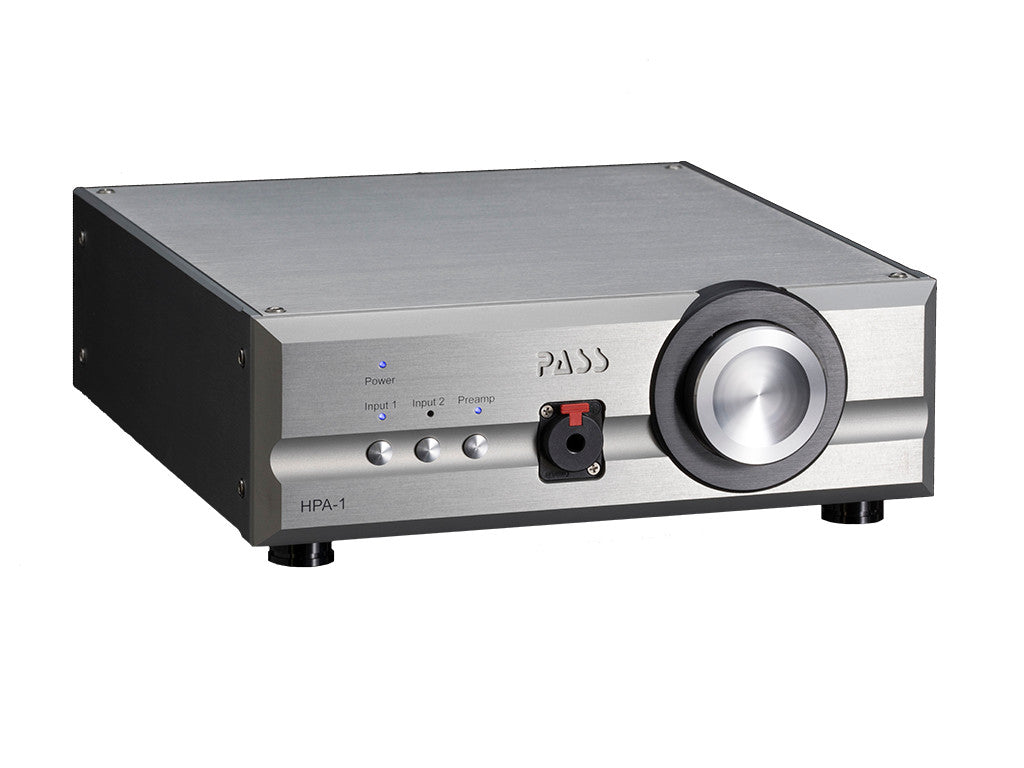
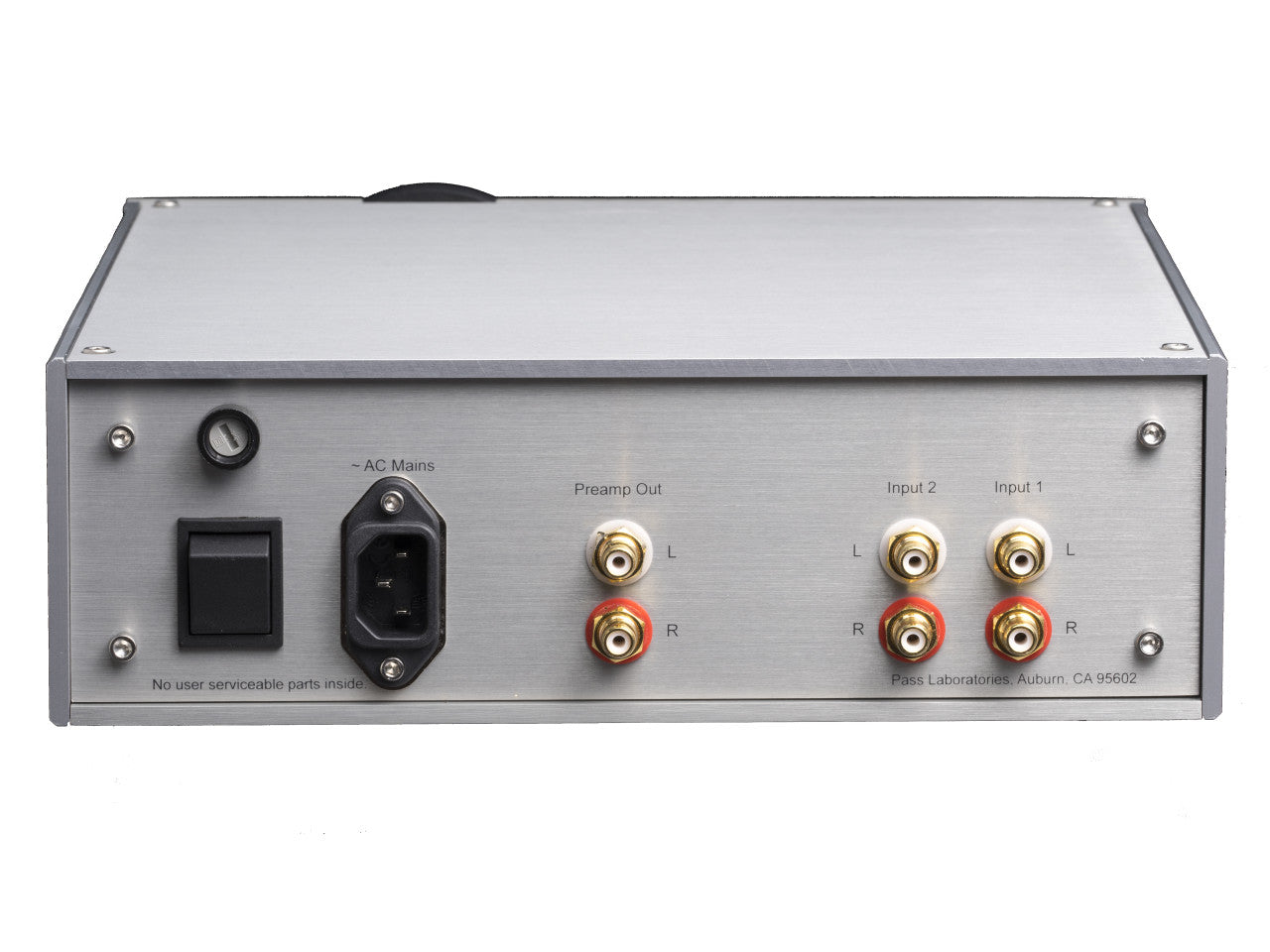
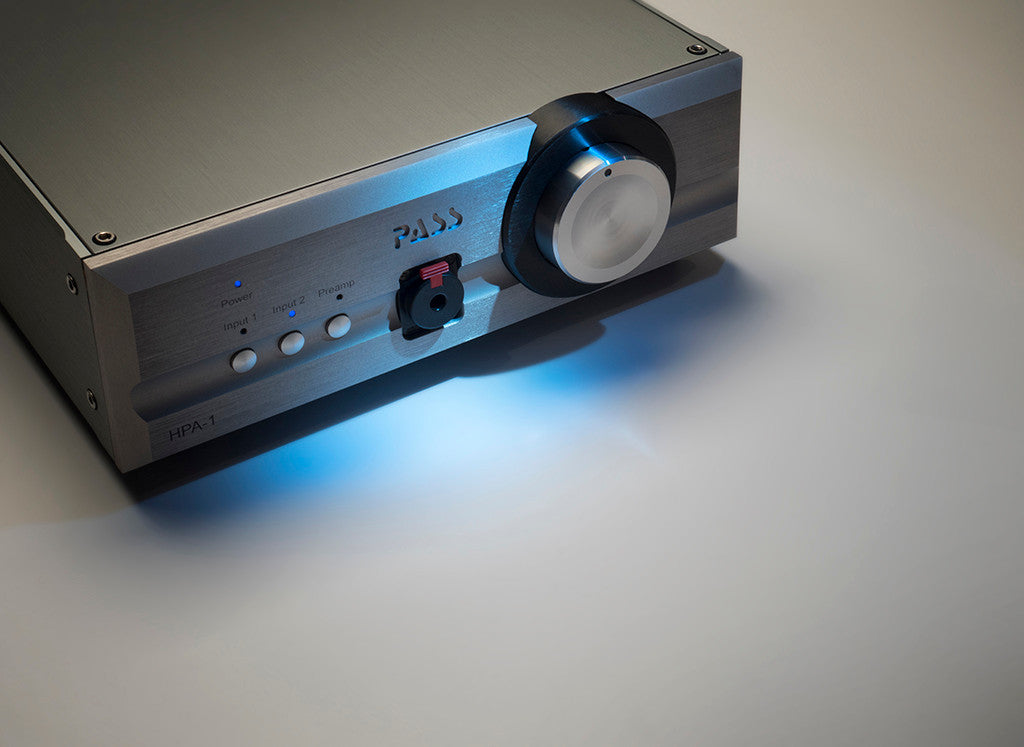
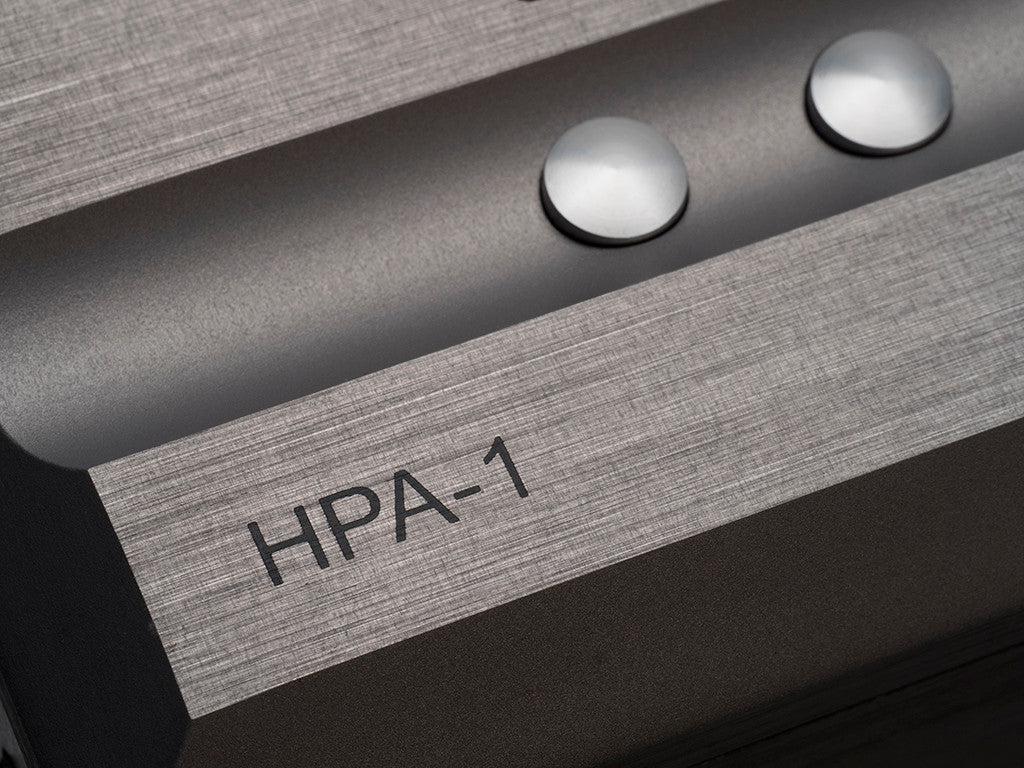
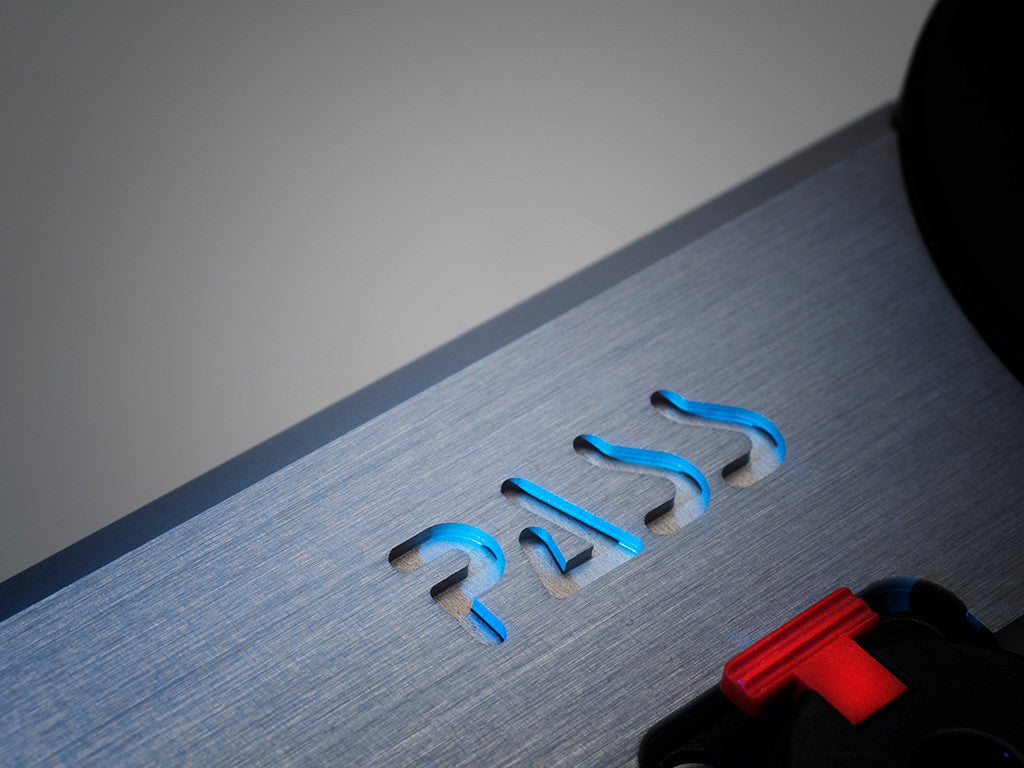
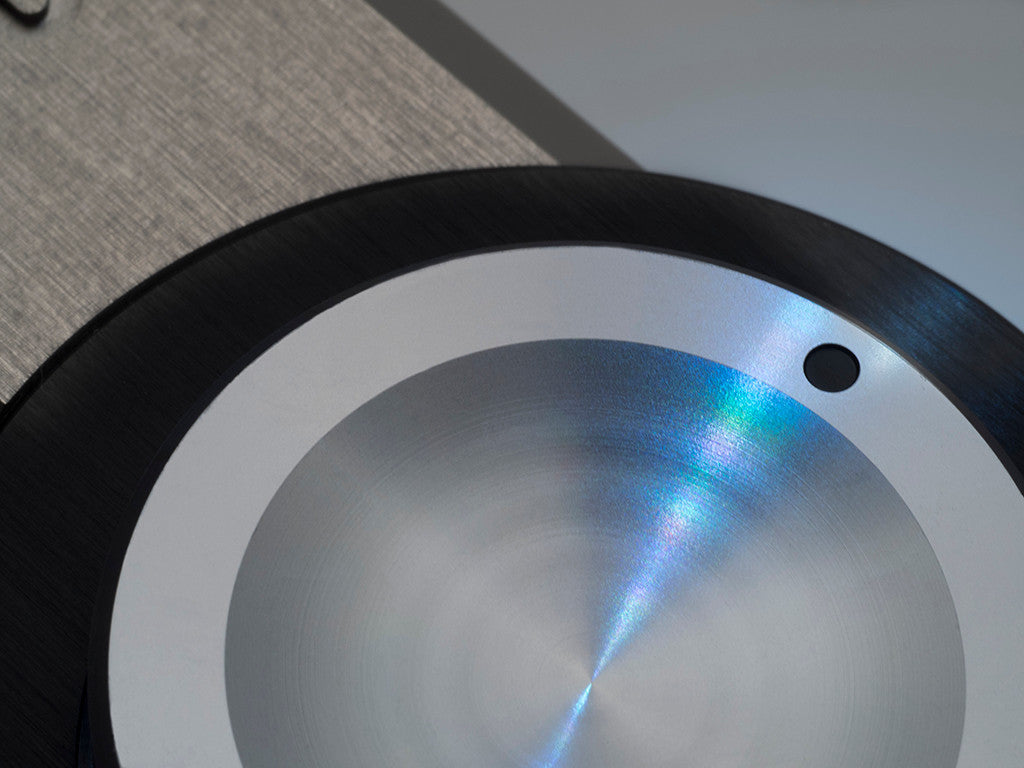
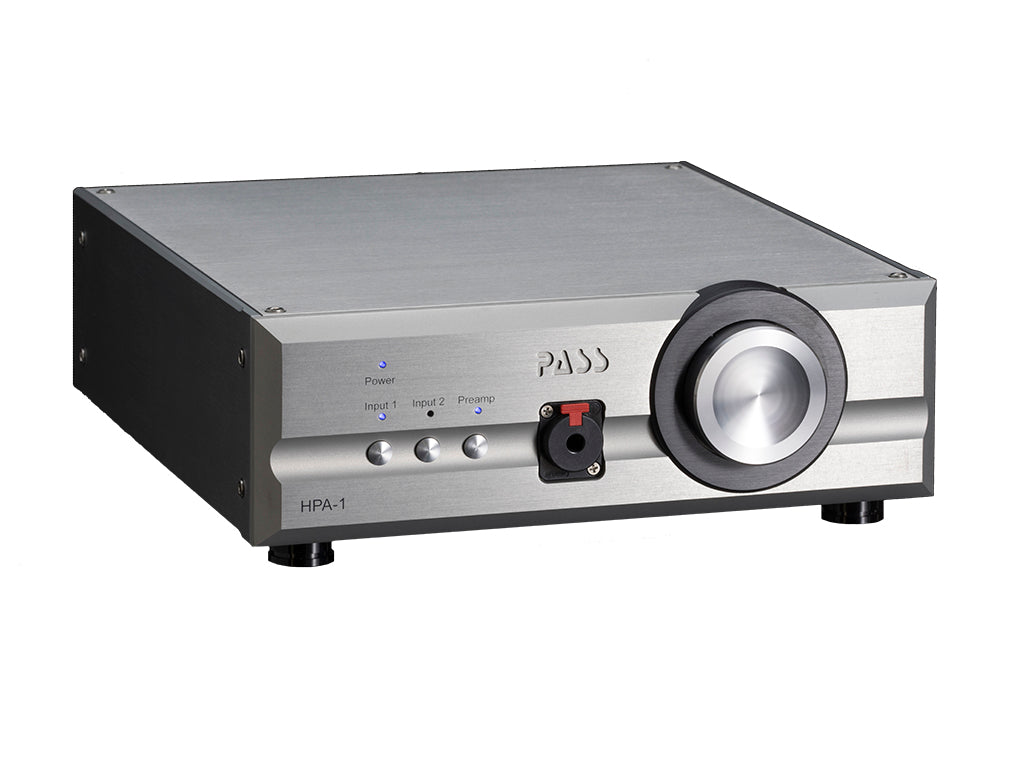

Pass Labs
HPA-1 Headphone Amp
$3,675.00 USD
Features
Designed as a power amplifier rather than a typical headphone amplifier to be able to drive low impedance planar headphones.
Low feedback wide bandwidth discreet design.
Class A direct coupled Mosfet output stage.
Custom low noise Toroidal power transformer with a Faraday shield.
Discreet regulated power supply for audio circuits.
What's in the Box?
Warranty
The HPA-1 headphone amplifier from Pass Labs is one of our most popular headphone amps at Moon Audio. Featuring a single-ended quarter-inch headphone output and a large and extremely accurate volume control, the HPA-1 is compatible with most full-size headphones on the market. It features a Class A amplifier and outputs enough power to drive most power-hungry headphones with ease, such as the HiFiMan Susvara. The HPA-1 features low feedback, wide bandwidth, and a direct coupled MOSFET output stage.
The other side of the audiophile coin for the HPA-1 is that it can also function as a high-quality standalone line-level preamplifier. The preamp function can stand on its own with preamps in much higher price ranges, and represents a tremendous value for a unit of this size. You're getting a high-end, Class A headphone amplifier and preamplifier in one device.
Dragon Cable Recommendation: we recommend pairing the HPA-1 Headphone Amplifier with the Black Dragon Interconnect. The Black Dragon Interconnect is one of our best-selling cables at Moon Audio. Sold in Pairs, it is our top-of-the-line copper conductor-based interconnect. With a braided geometry and amazing shielding, this interconnect is a remarkable solution where noise isolation is key. The Black Dragon Power Cable is also recommended to provide the cleanest and unbridled power to your high-end amplifier.
Features:
- Works with headphones with impedances of 15 ohms to 600 ohms.
- Designed as a power amplifier rather than a typical headphone amplifier to be able to drive low impedance planar headphones.
- Low feedback wide bandwidth discreet design.
- Class A direct coupled Mosfet output stage.
- Custom low noise Toroidal power transformer with a Faraday shield.
- Discreet regulated power supply for audio circuits.
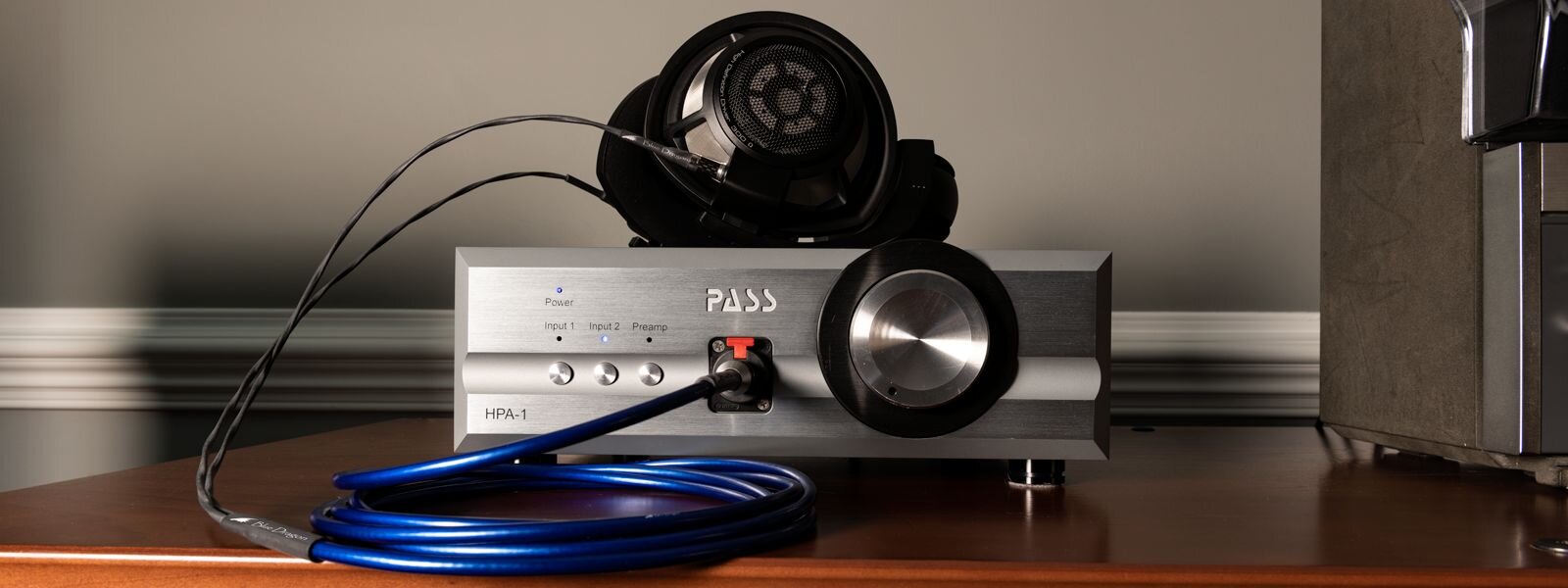
The HPA-1 is at the moment the only Pass Lab product specifically aimed at the personal stereo/headphone market. It was optimized around headphones with impedances between 15 ohms and 600 ohms and originally targeted the newly emerging planar magnetic "over ear' headphone use. The input JFET stage was modeled after some of our in-house phono-stage circuit topologies, taking advantage of their relatively low noise and ability to provide a rich and detailed soundstage. The output stage is a direct coupled MOSTET based circuit taking advantage of their ability to drive a wide range of impedances with very little feedback.
Planer magnetic drivers, generally fall into a class of drivers requiring medium amounts of power. The HPA-1 serves this market with distinction. Falling outside of the medium power "main-steam" requirement headphone user are very high efficiency IEM (in ear monitors) and very low efficiency "Ear Speakers". The HPA-1 should not however be dismissed out of hand for either of these applications. High efficiency devices, call for extraordinary low noise circuits and low efficiency ear speakers at times require very high power.
The same warmth, body and drive the HPA-1 imparts to the headphone experience translates to how it sounds as a single ended (RCA connection) line-stage. If you have a power-amp and loudspeakers that need a little additional authority, the HPA-1 might be the perfect addition with the added benefit of being headphone friendly.
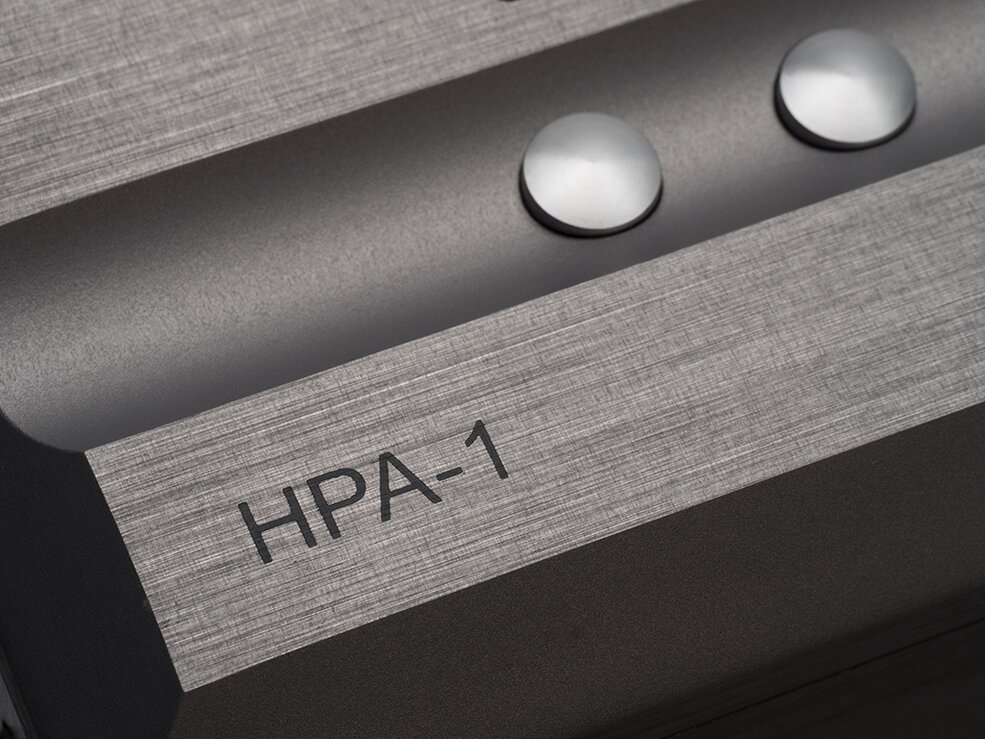
Designed to Drive Headphones With Ease
The Pass Labs HPA-1 was originally designed as a power amplifier to allow the amp to drive low impedance planar magnetic headphones. You'll find a Class A headphone amp that can drive any headphone in the 15-600 ohms range with complete ease. The HPA-1 features an incredible dynamic range across the entire frequency response spectrum, resulting in amazingly robust sound quality and an impactful listening experience every time you put on a pair of headphones.
Pass labs created a truly unique headphone amplifier with the HPA-1 - it's not every day that a company designs a power amplifier concept only to turn it into a headphone amp later. Pass Labs pulled out all the stops with a Class A amplifier, offering major performance gains over competitors in similar price ranges. At the heart of the HPA-1 you'll find a custom, low-noise, shielded toroidal power transformer that feeds a discrete power supply for the audio circuits. It's important to note that Pass Labs designed the power supply this way for extremely low noise and superior isolation for the audio circuit. The quality of the power supply goes a long way towards the sound quality of a headphone amplifier, and the Pass Labs HPA-1 is second to none.
High-End Design With High-End Features
The HPA-1 features low-feedback and wide-bandwidth discrete amplifier circuit designs - specifically utilizing J-Fet input stages and Class A biased, direct-coupled MOSFET output stages. This helps the HPA-1 to drive headphones with loads between 15-600 ohms with efficiency. No matter if your headphones are dynamic drivers or even the more power-hungry planar magnetic drivers, the HPA-1 Headphone Amplifier is up to the task. The amp offers an incredibly rich and detailed music presentation and a dynamic performance with all the power that the amplifier is capable of outputting.
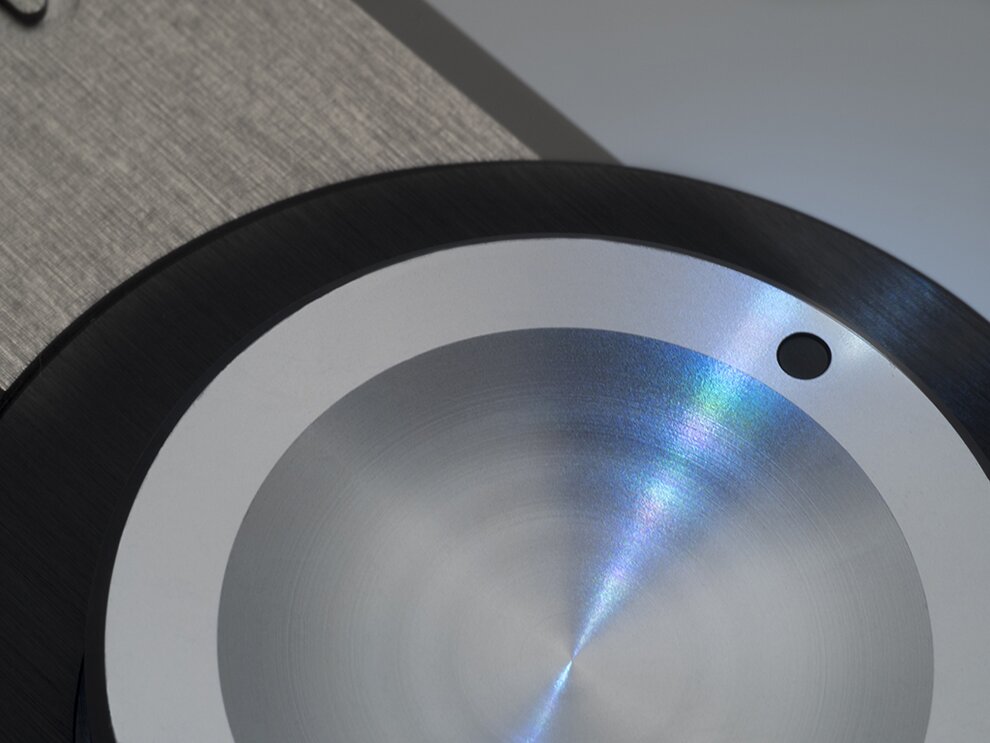
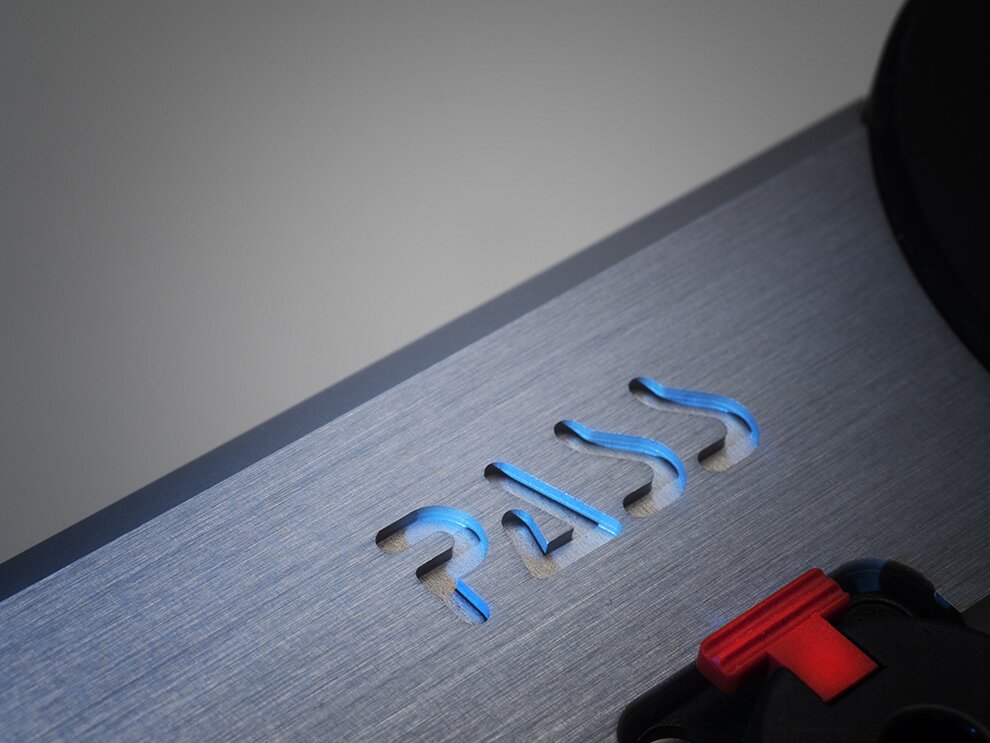
The HPA-1 features a quarter-inch single-ended headphone jack on the front panel, a large volume control/rotary knob that is connected to an ALPS potentiometer, and three buttons that select input or engage the preamp output. On the rear panel, you'll find two pairs of single-ended analog inputs via RCA jacks, a set of switchable "preamp" line-level output jacks, the power switch, and the fuse. The HPA-1 is designed with the customary brushed-aluminum chassis that matches the rest of the Pass Labs product lineup. Sleek and refined - modern and high-end.
Pass Labs and First Watt
Pass Labs and First Watt were founded by hi-fi legend Nelson Pass. After co-founding and later selling Threshold Audio, Pass began working out of his Auburn, California, home in the early 1990s to develop prototypes of single-ended Class A amplifier designs under the name Pass Labs. Pass Labs quickly became known for its commercially produced Aleph, X, and XA Series amps, and preamps. Pass later started First Watt as a passion project focusing on low-power amps for a niche audiophile audience. Today, Pass splits his time between the two companies, with production happening in Pass Labs' facility in Foresthill, California, USA. Some of Pass Lab’s most notable products include the HPA-1 Headphone Amplifier, their integrated amp series (featuring the Pass Labs INT-25, Pass Labs INT-60, and the Pass Labs INT-250), the Pass Labs XA25, and more. If you’re looking for a monoblock amplifier, stereo amplifier, integrated amplifier, or headphone amplifier, then Pass Labs has everything you need for your high-end audio. Visit passlabs.com for more info.
What's in the Box?
- HPA-1 Headphone Amplifier
- Power Cable
- Manual and Warranty
FAQ
What makes the Pass Labs HPA-1 a standout headphone amplifier?
The Pass Labs HPA-1 is designed more like a power amplifier than a typical headphone amp. It features a high-bias Class A operation with a discrete JFET input stage and a MOSFET output stage, providing high power and excellent sound quality. Its design ensures low noise and wide bandwidth, making it suitable for a wide range of headphones from 15 to 600 ohms. It has excellent tonality and midrange, making it a solid choice for audiophiles everywhere.
Can the HPA-1 drive high-impedance headphones effectively?
Yes, the HPA-1 can drive high-impedance headphones, such as the Beyer Dynamics DT880 with 600 ohms, with ease. Users report that it delivers good dynamics and volume even with hard-to-drive headphones, demonstrating its robust power and stability.
How does the HPA-1 perform as a preamplifier?
In addition to being a high-quality headphone amplifier, the HPA-1 also functions as a capable line preamplifier. It has two single-ended inputs and can be used for general system duties, although it lacks a remote control and balanced connections. Its minimalist design is appreciated for its simplicity and high performance. The input impedance, output impedance, and the overall output power make the HPA-1 a versatile piece of audiophile equipment.
What is the build quality of the Pass Labs HPA-1?
The HPA-1 boasts exceptional build quality, consistent with other Pass Labs products. It features a robust chassis made of brushed aluminum and includes high-quality components such as a custom toroidal transformer with mu-metal shielding to reduce noise. The large volume knob is a design delight.
Why does the HPA-1 not include an internal DAC?
Pass Labs chose not to include an internal DAC in the HPA-1 to ensure longevity and timelessness. DAC technology evolves rapidly, often becoming obsolete within a few years. By separating the amplifier from the DAC, Pass Labs ensures that the HPA-1 remains a relevant high-end audio and high-performing piece of equipment for many years.
How does the sound quality of the HPA-1 compare with other high-end headphone amplifiers?
he HPA-1 delivers a spacious soundstage, vivid detail retrieval, and excellent dynamics. It competes with and sometimes outperforms amplifiers that are much more expensive, providing smooth, non-fatiguing sound with a natural presentation of vocals and instruments.
What is the power output of the Pass Labs HPA-1 Headphone Amplifier?
The Pass Labs HPA-1 offers a robust power output suitable for a wide range of headphones. It delivers up to 3.5 Watts in 32 ohms, providing ample power for demanding high-impedance headphones. This ensures a clean and dynamic sound even at higher volumes, maintaining fidelity and clarity.
Does the Pass Labs HPA-1 support balanced headphone connections?
No, the Pass Labs HPA-1 features only single-ended headphone outputs. It includes a 1/4-inch (6.35mm) stereo single-ended output.
What type of volume control does the Pass Labs HPA-1 use?
The Pass Labs HPA-1 utilizes a precision-stepped relay volume control, providing accurate and repeatable volume adjustments. This design ensures precise level matching between left and right channels, maintaining the integrity of the audio signal. Users can easily fine-tune the volume to their preference with the smooth and reliable stepped attenuator.
Who is Nelson Pass?
Nelson Pass, the man behind Pass Labs and First Watt, has been designing and building amplifiers for decades. His early passion, however, was speakers; at age 14, he started assembling loudspeakers. As a college student studying physics at the University of California-Davis, he co-founded a speaker company called PMA. He also worked for ESS, where he designed crossovers and enclosures. After college, with his interest having shifted toward amplifiers, Pass co-founded Threshold Electronics (now Threshold Audio). His achievements during the Threshold years include developing the first dynamically biased Class A amplifier circuit; developing a fully cascode audio power amplifier; and developing the STASIS stereo preamplifier and power amplifier. During the 1980s, Pass designed the Adcom GFA-555 amplifier. Later, after selling Threshold, he started Pass Labs in 1991 and First Watt in 1997. Pass holds several patents related to audio circuits.
How did Pass Labs make its name?
Pass Labs helped popularize solid-state, Class A power amplifiers. Pass Labs' first product, the Aleph 0 amplifier, operated as a single-ended Class A up to its 70-watt rating and in push-pull Class A at higher wattage. The Aleph series of amplifiers, some of the first solid-state amps that were said to be "tube-like" in sound, operated pure class A and contained internal circuitry using MOSFETs. The Aleph amplifiers had a unique appearance, a cube with heat sinks on all four sides, a solution to the heat generated by the class-A design. This can be attributed primarily to the specific MOSFETs used and the minimum number of gain stages that were implemented in the design. Pass Labs also developed the Super-Symmetry™ ("Su-Sy") circuit, which achieves exceptionally low distortion and noise levels. In 1998, Pass Labs released the X1000, the first amplifier using the patented SuperSymmetric™ topology. The X1000 achieved 1000 watts with high performance, local feedback, and only two gain stages: a cascaded differential pair of transistors and a large bank of complementary output followers. This groundbreaking design informed all subsequent Pass Labs amplifiers.
What else does Pass Labs make?
In 2002, Pass Labs unveiled the first XA amplifiers, combining the X and Aleph topologies into balanced single-ended Class A amplifiers with many of the characteristics of both the X and Aleph series. The current Pass Labs lineup includes Class A amps (XA and Xs Series), Class AB amps (.8 Series), line preamps (Xs and XP Series), phono preamps (Xs and XP Series), integrated amps (INT Series), and one headphone amp.
What is the relationship between Pass Labs and First Watt?
When he started Pass Labs, Pass did everything out of his home. In 1997, having outgrown the space, Pass Labs moved into commercial space in Foresthill, California. When Pass started First Watt, it was a "kitchen table" venture, with work once again happening in his home. In 2016, with production demands not leaving him enough time to pursue the vast array of yet-to-be-designed amps, Nelson handed the business end of First Watt over to Pass Labs. Pass Labs took over the building of First Watt amplifiers as well as marketing and distribution. There's a synergy between the two operations, in that Pass Labs gets to gather up some of the more interesting First Watt finds and repurpose them as more commercially viable designs. Today, Pass splits his time between First Watt and Pass Laboratories.
Specifications
- Output Power into 20 ohms
- 3500mW
- Output Power into 300 ohms
- 200 mW
- Frequency Response 10hz-100k
- -1dB
- Gain
- 8 dB
- THD + Noise
- < 0.005 at 1V out
- Input Impedance
- 50K Ohm
- Output Impedance
- < 2 ohms
- Power Consumption
- 6 Watts
- Dimensions
- 4.5" H x 11" W x 13" D
- Weight
- 14lbs
